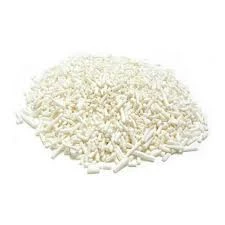
Exploring the Origins and Uses of Sodium Benzoate in Food Preservation
The Origins and Applications of Sodium Benzoate
Sodium benzoate, a widely used preservative and antimicrobial agent, is the sodium salt of benzoic acid. It occurs naturally in certain fruits, such as cranberries, prunes, and apples, and has been utilized for centuries due to its preservative properties. Its origins can be traced to various sources, including both natural and synthetic pathways, providing a fascinating insight into its chemical identity and applications in modern society.
Natural Sources
Sodium benzoate is derived from benzoic acid, which is found in a range of plant substances. Historically, the use of benzoic acid dates back to ancient civilizations, where it was extracted from the resin of the Styrax tree. Benzoic acid can also be obtained from other natural sources, like certain berries and cinnamon. However, the sodium salt form, sodium benzoate, is primarily produced through a synthetic process, where benzoic acid is neutralized with sodium hydroxide or sodium carbonate.
Production Methods
The commercial production of sodium benzoate typically involves the direct synthesis of benzoic acid using various methods, such as the toluene oxidation process. In this method, toluene is oxidized to benzoic acid, which is then neutralized with sodium hydroxide to obtain sodium benzoate. This synthetic method not only ensures a high level of purity but also allows for large-scale production. As a result, sodium benzoate is readily available for various industrial applications.
Applications in Food Preservation
sodium benzoate origin

One of the primary uses of sodium benzoate is in the food industry, where it serves as a food preservative. It is effective in inhibiting the growth of bacteria, yeasts, and molds, particularly in acidic environments. Because of its effectiveness, it is commonly found in beverages, pickles, and various condiments. The maximum permissible concentration of sodium benzoate varies by country, but it is generally recognized as safe when used within established guidelines.
The mechanism behind its antimicrobial activity is relatively straightforward. Sodium benzoate enters the cell of a microorganism and alters its internal pH, ultimately leading to cell death or inhibiting its ability to reproduce. This makes it particularly suitable for products with a pH below 7, where it remains in its active form.
Safety and Regulations
Sodium benzoate is included in the Generally Recognized as Safe (GRAS) list by the U.S. Food and Drug Administration (FDA). However, concerns have been raised regarding its potential health impacts, particularly in the presence of ascorbic acid (vitamin C) and exposure to high temperatures. When combined with ascorbic acid, sodium benzoate can form benzene, a known carcinogen. Although the concentrations typically present in food are well below harmful levels, this interaction highlights the importance of continued research and monitoring.
Conclusion
In conclusion, sodium benzoate has a rich history rooted in natural sources, emerging as a key player in the preservation of food products. With its origins pointing to both natural extracts and synthetic chemistry, it underscores the importance of understanding chemical compounds in our food supply. While it serves crucial functions in food preservation, ongoing attention to safety regulations and potential interactions underscores a broader responsibility to consumers. As we continue to explore the roles of preservatives in our diets, the story of sodium benzoate illustrates the intersection of nature, technology, and health in our everyday lives.
-
Aluminum Hydroxide: Quality Gels & Dried Gel AntacidNewsAug.31,2025
-
Buy High-Quality Trichloroisocyanuric Acid for Sale | TCCA 90% SupplierNewsAug.30,2025
-
Pure Sodium Dichloroisocyanurate Dihydrate | Powerful DisinfectantNewsAug.29,2025
-
Industrial Chemicals: Quality & Purity for Every IndustryNewsAug.28,2025
-
Nitrile Rubber Honoring Strict Production StandardsNewsAug.22,2025
-
Aspartame Ingredients Honoring Food Safety ValuesNewsAug.22,2025
-
Fertilizer for Balanced Plant NutritionNewsAug.22,2025
Hebei Tenger Chemical Technology Co., Ltd. focuses on the chemical industry and is committed to the export service of chemical raw materials.
-

view more DiethanolisopropanolamineIn the ever-growing field of chemical solutions, diethanolisopropanolamine (DEIPA) stands out as a versatile and important compound. Due to its unique chemical structure and properties, DEIPA is of interest to various industries including construction, personal care, and agriculture. -

view more TriisopropanolamineTriisopropanolamine (TIPA) alkanol amine substance, is a kind of alcohol amine compound with amino and alcohol hydroxyl, and because of its molecules contains both amino and hydroxyl. -

view more Tetramethyl Thiuram DisulfideTetramethyl thiuram disulfide, also known as TMTD, is a white to light-yellow powder with a distinct sulfur-like odor. It is soluble in organic solvents such as benzene, acetone, and ethyl acetate, making it highly versatile for use in different formulations. TMTD is known for its excellent vulcanization acceleration properties, which makes it a key ingredient in the production of rubber products. Additionally, it acts as an effective fungicide and bactericide, making it valuable in agricultural applications. Its high purity and stability ensure consistent performance, making it a preferred choice for manufacturers across various industries.





